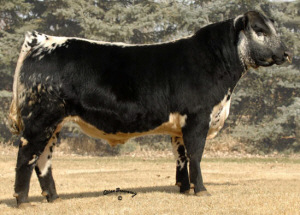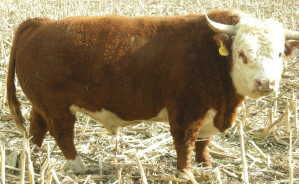



Senepol
History
In the 1800s N'Dama Cattle were imported to the Caribbean Island of St. Croix from Senegal, West Africa. St. Croix is the largest and Southernmost of the U.S. Virgin Islands, located roughly 1200 miles Southeast of Miami, Florida.
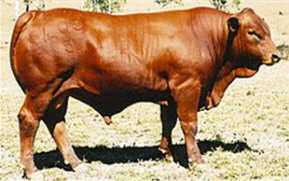 Photo courtesy of The Australian Senepol Cattle Breeders Association Inc., www.senepol.com.au |
By 1889 Henry C. Nelthropp's Granard Estates was one of the largest N'Dama breeders with over 250 head, which he maintained as purebreds. Nelthropp's son, Bromley, wanted to develop cattle that would combine the traits needed for superior levels of production in the Virgin Islands' tropical environment. Attempts to import higher producing cattle from temperate regions had failed; the cattle having broken down quickly from heat and nutritional stress.
In 1918, Red Poll genetics were introduced to the Nelthropp's N'Dama stock to improve milking ability, fertility and make them polled. This blending of genetics proved quite successful, and formed the foundation of the Senepol breed. As more Red Poll influence was added, strict selection pressure was applied for:
1. early maturity and maternal efficiency
2. polled and solid red colour
3. definite heat tolerance
4. gentle disposition
In the 50 years since the Nelthropp herd was dispersed to local breeders, the development of the Senepol breed on the St. Croix has been continued by four primary herds that still operate on the island today.
The largest two number 400 and 220 mother cows respectively. The isolation of St. Croix sheltered the Senepol breed from the fads that have constantly assaulted the U.S. purebred industry. While other breeds chased certain trends, only to turn and race just as fast in the opposite direction, Senepol's route was characterised by continued selection for animals that could perform and reproduce under the harsh St. Croix environment.
From their beginnings, the island herds maintained genetics records, which grew into the Senepol breed registry in the late 1960s and the early '70s. On-farm performance testing began in the mid-1970's with the establishment of the Virgin Islands BCIA. In 1977 a plane carrying 22 Senepol cows left for the U.S. mainland; 20 years later, the Senepol Cattle Breeders Association recognises over 500 breeders and more than 14,000 Senepol records.
Characteristics
Senepol cattle are red in colour, medium sized, naturally polled cattle. They have good conformation which produces a good carcass.
Adult cows average 1,000 to 1,200 lbs., and consistently wean off 50% or better of their body weight while maintaining an efficient calving interval. Cows stay in production upwards of 15-20 years.
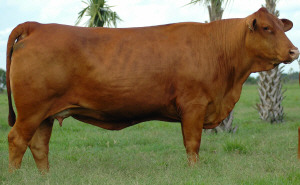 Photo courtesy of The Senepol Cattle Breeders Association, www.senepolcattle.com |
Statistics
Comparative
USDA research indicates that Senepol have greater immune response when compared to other beef breeds. This is due greatly to the N'Dama influence in Senepol, and is also aided by generations of natural selection being applied on the island of St. Croix.
Distribution
Today Senepol can be found thriving in 21 states of America and around the world in countries such as Venezuela, Mexico, Philippines, Zimbabwe, Brazil and many others where their tropically adapted production is needed.
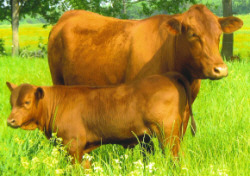 Photo courtesy of The Senepol Cattle Breeders Association, www.senepolcattle.com |
References (the above information was cited from the following sites)
www.senepolcattle.com
www.senepol.com.au

